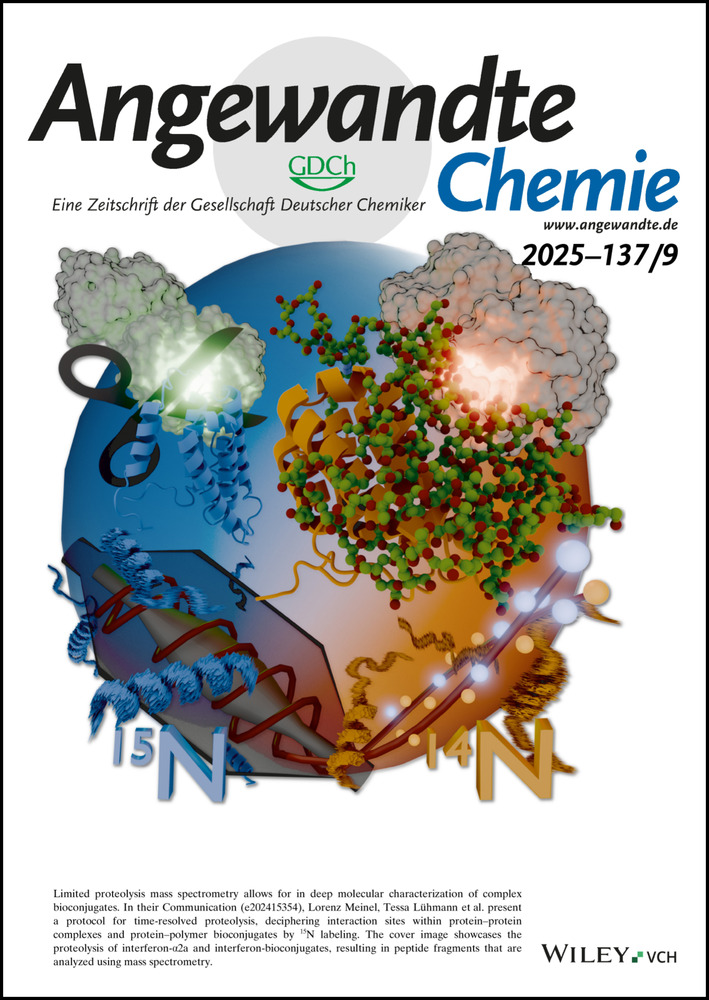Marcus W. Drover
Graphical Abstract
“The most rewarding aspect of being a scientist is pursuing fundamental curiosity-driven research simply because you wonder ‘what if…?’ followed by the thrill of figuring out what you've made!… I get my best ideas when I'm running on a treadmill…” Find out more about Marcus Drover in his Introducing… Profile.
Marcus W. Drover
The author presented on this page has published his first article as a submitting corresponding author in Angewandte Chemie:
“CO2 Reduction at a Borane-Modified Iron Complex: A Secondary Coordination Sphere Strategy”: C. S. Durfy, J. A. Zurakowski, M. W. Drover, Angew. Chem. Int. Ed. 2025, 64, e202421599.
-
Position, Location:
-
Assistant Professor, Western University, London, ON (Canada)
-
Homepage:
-
-
ORCID:
-
-
Education:
-
2008–2012, B.Sc. (Hons.), Memorial University of Newfoundland, St. John's, NL (Canada)
2012–2016, Ph.D. with Profs. Laurel L. Schafer and Jennifer A. Love, University of British Columbia, BC Vancouver (Canada)
2014, Michael Smith Visiting Scholar with Prof. Andrew S. Weller, Oxford (UK)
2017–2019, Banting and Resnick Sustainability Postdoctoral Fellow with Prof. Jonas C. Peters, Caltech, Pasadena, CA (USA)
-
Research:
-
Organometallics, coordination chemistry, small-molecule activation, catalysis, ligand design, sustainability
-
Hobbies:
-
Travelling, musical theatre, running, gardening, playing with my two French Bulldogs (Merlot and Cookie)
The most rewarding aspect of being a scientist is pursuing fundamental curiosity-driven research simply because you wonder “what if…?” followed by the thrill of figuring out what you've made!
My first experiment was reacting a toluene solution of trimethylaluminum (AlMe3) with a phenol-containing pro-ligand (under supervision!). These results would later be included in one of my very first publications.
The most rewarding part of my job is sharing a positive “Decision on your manuscript” email with students – a culmination of hard work, creativity, and growth.
The pieces of lab equipment that I could not be without are our gloveboxes – otherwise, all our compounds would fall apart!
The most valuable feature of a good referee report is constructive feedback that gives you a different perspective.
The best way to keep up with research in my field is by parsing through the group's journal club channel on Slack!
The most important thing I have learned from my students is how to be patient. Slowing down and giving space to grow ensures careful project design and thoughtful data interpretation.
My group has fun by sharing our work and learning from others at conferencesand having group meals. It's a journey where we work hard and play harder!
The most challenging aspect of leading a research group is securing ample funding to recruit talented researchers.
An essential quality of a good research atmosphere is surrounding yourself with motivational and positive people who contribute to a space where everyone feels empowered.
I lose track of time when I'm spending time with my (at the time of writing this) four-month-old daughter.
When I was a kid I wanted to be a marine biologist – an excellent high school chemistry teacher steered me away from this direction.
I get my best ideas when I'm running on a treadmill.
My favorite place on earth that science has taken me to is Los Angeles, California – sunny weather, stunning coastline, and great concerts.
My most favorite drink is a bold Californian Cabernet Sauvignon.
Behind the Science
Our group has recently been exploring the reactivity of a tucked-in iron compound, installing electrophilic groups, such as boranes, adjacent the metal center. Given the known cooperativity between Lewis acids and transition metals to facilitate CO2 activation, we wished to explore related reactivity of our bifunctional {Fe-H/Cp*-B} species. We were excited by the complex transformation that took place, motivating us to explore the mechanism in greater detail. The most difficult, but rewarding, aspect of this work was figuring out how to probe this system using a complement of reaction monitoring, control experiments, and spectroscopic characterization.





